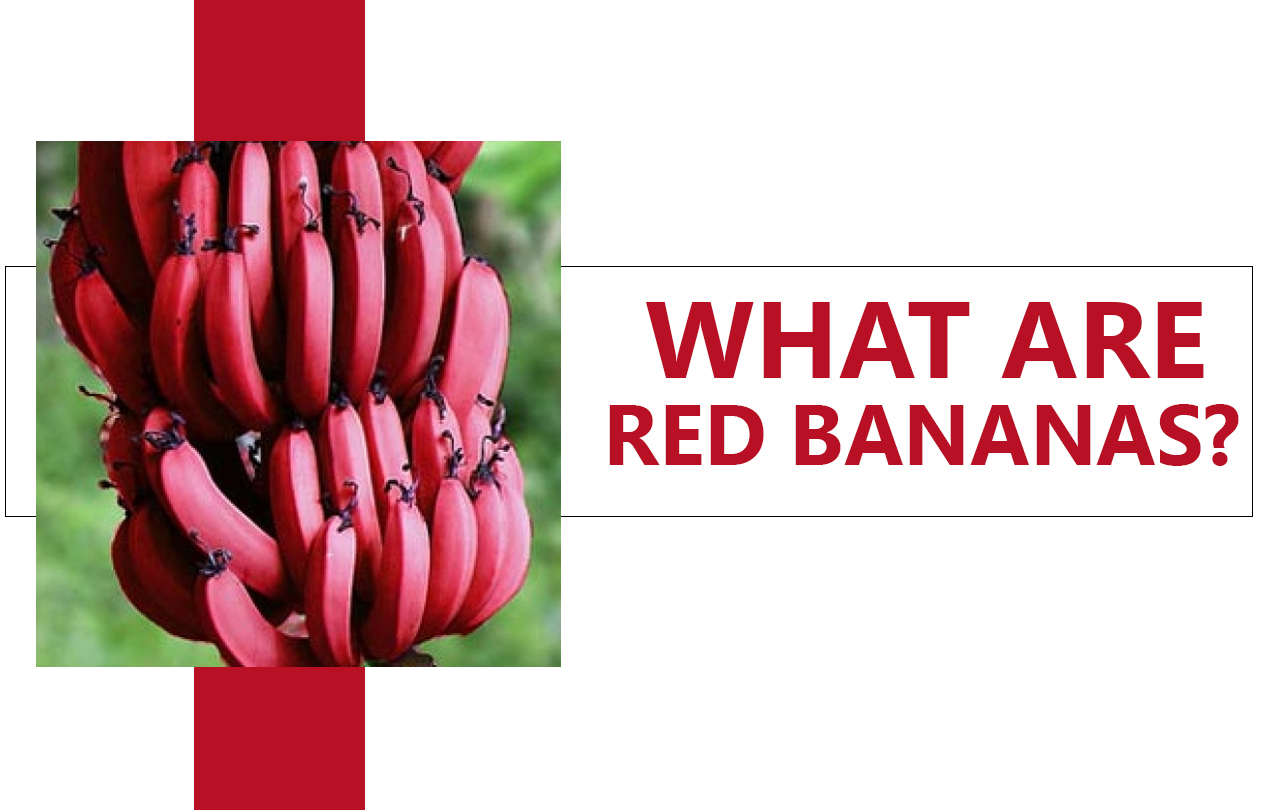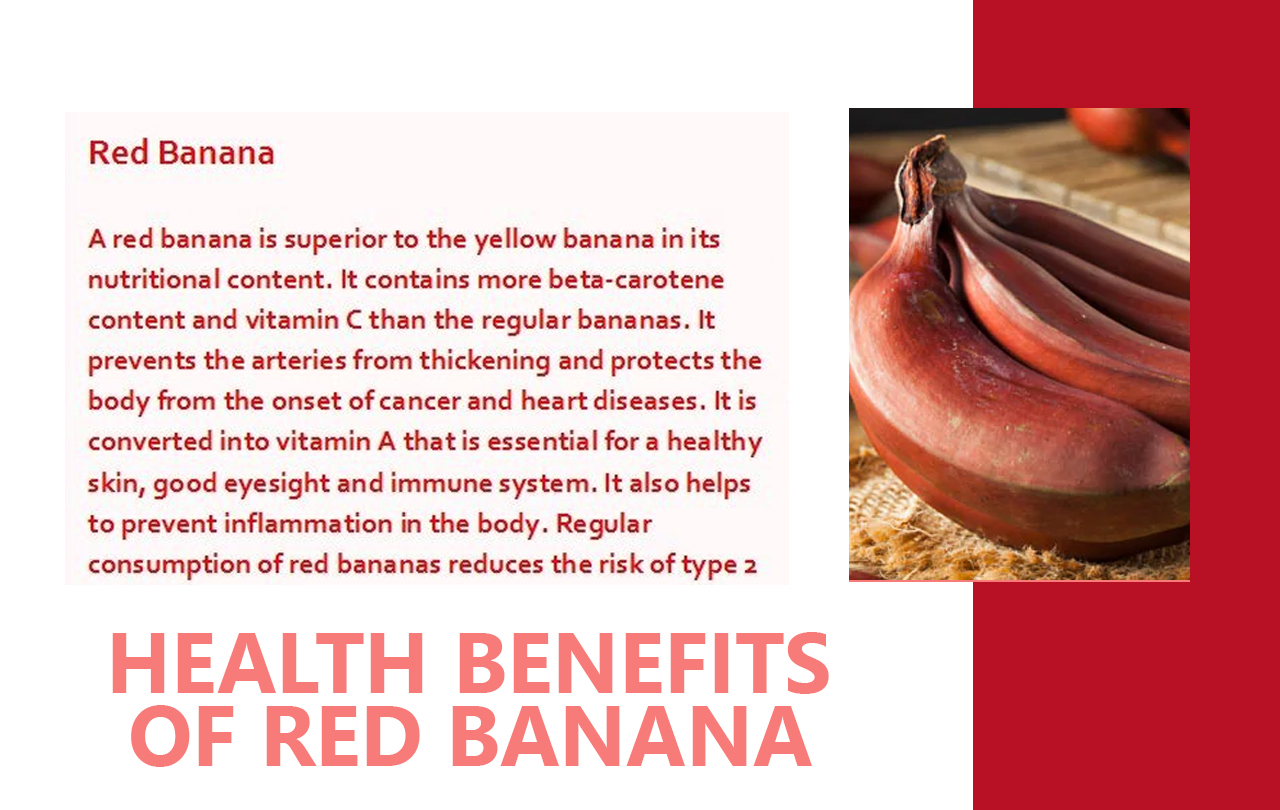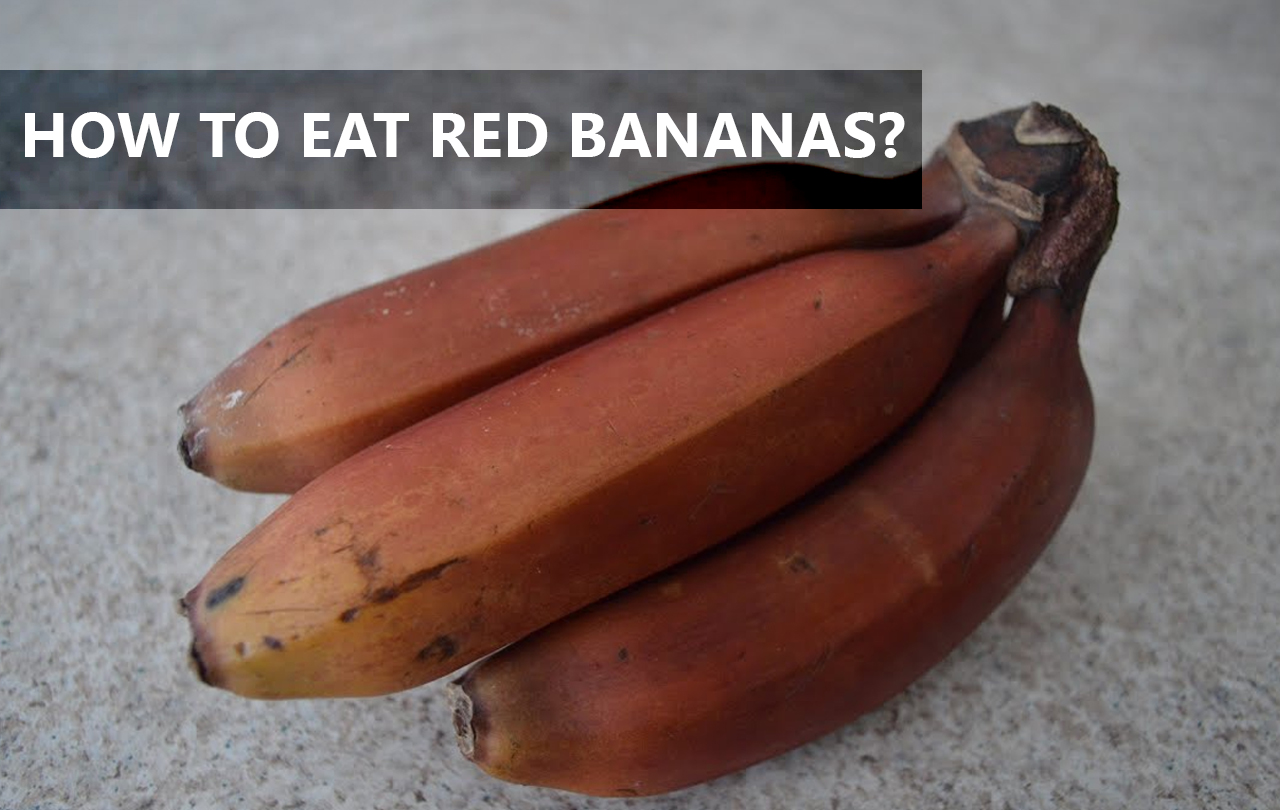Table of Contents
Are red bananas real? Yes. Over 99% of the bananas utilized in North America are the yellow Cavendish. Still, elsewhere, particularly in Central America and southeast Asia, a different cultivar from the same species are more popular. It produces smaller bananas that are reddish or purple.
Red banana (Musa acuminate) is authoritatively known as Red Dacca. It tastes like raspberries and has a red outer peel. It belongs to a subgroup of bananas from Southeast Asia.

What are Red Bananas?
A mini variant of the better known yellow bananas, red bananas are distinguished by their characteristic color, which ranges from purple to brown, depending on the degree of ripeness. Red bananas have a taste quite similar to that of yellow bananas, with a slight hint of raspberries.
In Central America, red banana juice is considered a significant (and useful) aphrodisiac, while in India, this type of banana is a symbol of fertility. The leading world producers are Thailand (used to prepare green curry), Ivory Coast, Colombia, and Ecuador.

Health Benefits of red banana
Red bananas are favorite fruits in Central America due to their taste, as they are sweeter than bananas and have a raspberry flavor. Red bananas have alike health benefits as yellow bananas have. You can include red bananas in your daily diet to keep your digestive system healthy and proper nutrition.
Weight Loss
Red bananas are low in calories and low in glycemic index, so they are the best fruits that you can include in your weight loss diet plan.
They also feel your full abdomen and no appetite for several hours without giving you more calories. Therefore, you can overcome food cravings and control your appetite. They are the best fruits for weight loss, and they provide sound nutrition too.
Constipation & Digestive Health
One medium red banana can provide you about 3 to 4 grams of dietary fiber, which keeps your digestive health perfect and helps constipation. A single banana can give you about 15% of daily fiber necessities.
Heart Diseases
Due to the fiber and potassium content, red banana reduces the risks of heart diseases and other metabolic diseases, including diabetes.
A medium red banana provides about 400 mg of potassium, which equals 11% of the daily requirement of potassium. You need potassium for heart health, as it maintains the electrolyte and fluids balance in the body. Also, potassium plays a vital role in heart muscle functions. It is required for heart contraction that pulls the blood to the various parts of the body.
Potassium-rich foods also lower blood pressure, so you can also benefit from red bananas in high blood pressure.
Anemia
Red bananas are a reliable source of iron and Vitamin B6. These nutrients are essential for red blood cell metabolism and making hemoglobin. One hundred grams of red banana pulp provides 0.4 mg vitamin B6 and 0.3 mg iron.
Prevents Cancer & Enhances Immunity
Red bananas are rich in vitamin C. A medium banana contains about 10 mg vitamin C, which is equal to 17% of the daily value of vitamin C.
Also, red banana contains a colorful substance, which helps in boosting immunity and preventing cancer.
Red bananas are rich in antioxidants and fight off free radicals, further reducing the risks of cancer and heart diseases.

How to Eat Red Bananas?
There is no secret: wait for the banana peel to become darker or populated with brown spots. This is the unmistakable sign that the banana has reached the right degree of ripeness and is ready to be consumed.
Perfect by themselves, they can be cut into pieces and added to a fruit salad or as a topping to a generous amount of ice cream.
Side Effects of Red Bananas
Red bananas are generally well tolerated but don’t compensate right with everyone, especially in large servings.
- Stomach aches
- Diarrhea or loose stools
- Constipation
- High blood sugar
- Fatigue or sleepiness
- Migraine headache trigger
- Allergy risk
- Contains a mannose-binding lectin
Most of the adverse reactions related to digestion have to do with the fiber content; approximately 1 gram of soluble and 2 grams of insoluble. The latter ads to the mass of stools, which can cause constipation without adequate water/liquid intake.
The soluble fiber is the same active ingredient in Metamucil. It promotes bowel movements, but because it swells up in the digestive tract, a blockage can result if there’s not enough water.
If you feel tired after eating a banana, it may be due to the magnesium content. There’s also the amino acid tryptophan, which your body converts to the neurotransmitter serotonin, and that can induce sleepiness. These are the reasons why people use banana tea as a sleep remedy.
FAQs
[wps_faq style=”classic” question=”Q: What are red bananas good for?”]A: They’re rich in antioxidants, vitamin C, and vitamin B6. They offer a low-calorie but high-fiber addition to meals, snacks, and healthy desserts. Among other circumstances, the nutrients in red bananas may contribute to improved heart and digestive health when eaten as part of an overall healthy diet.[/wps_faq][wps_faq style=”classic” question=”Q: Are red bananas natural?”]A: Red bananas are also usually sold dried in stores. The red banana has more extra beta carotene and vitamin C than the yellow banana varieties. All bananas include natural sources of three sugars: sucrose, fructose, and glucose. The first bananas to arrive on the market in Toronto (in the 1870s and 1880s) were red bananas.[/wps_faq][wps_faq style=”classic” question=”Q: When should you eat red bananas?”]A: Red bananas are smaller, plumper, and heartier than the average banana. It should only be eaten when ripe as an immature Red banana tastes like a dry and chalky starch. When mature, it will have a thick, brick red peel and ivory-hued semi soft flesh. Its flavor is delicious and creamy with raspberry highlights.[/wps_faq][wps_faq style=”classic” question=”Q: Are red bananas rare?”]A: Ripe red bananas do not develop in the U.S., with many imported from producers in East Africa, Asia, South America, and the United Arab Emirates. Although they’re unique, red bananas possess different nutritional values than yellow bananas when it comes to vitamin C and potassium.[/wps_faq]
Conclusion
Red bananas are a unique fruit that gives many health benefits. They’re rich in antioxidants, vitamin C, and vitamin B6. They offer a low-calorie but high-fiber addition to meals, snacks, and healthy desserts.
Among other circumstances, the nutrients in red bananas may contribute to improved heart and digestive energy when eaten as part of an overall healthy diet.

